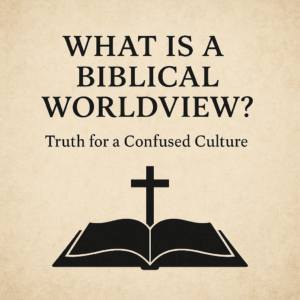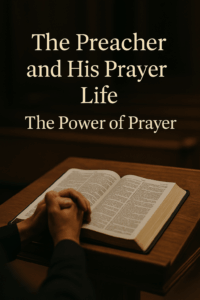⏱️ Estimated Reading Time: 11 min read
Editor’s note: The purpose of this series is to help our readers think through what the deity of Christ and it’s importance to the Christian faith.
- Dave opened our series by looking at Jesus the Divine Word.
- Dave wrote on seeing but not believing.
- Nick wrote on the revelation of the Father and the Son.
- Today Dave writes on Jesus, the True Light of the World.
**************************************************
Light is one of the great biblical images of salvation. Isaiah 9:2, “The people who walked in darkness have seen a great light; those who dwelt in a land of deep darkness, on them has light shone.” Light depicts the coming of God with saving light. Psalm 27:1, “The Lord is my light and my salvation; whom shall I fear? The Lord is the stronghold of my life; of whom shall I be afraid?” It was with this in mind that the Lord Jesus declared, “I am the light of the world” in John 8:12. Jesus came to a whole world in darkness. John uses the imagery of light to describe Jesus sixteen times in this gospel, light being a fitting symbol of the coming of God among men. Thus, Jesus is the only remedy for the darkness in the world. It is only through faith in Him that a darkened world may see and receive the light of God.
A Light For The World In Darkness
If we want to understand the nature of the light and salvation hat Jesus brings, we need first to understand the character of the darkness. What was the darkness in which Jesus found the world? According to the Bible, darkness is the realm of ignorance and folly. Psalm 82:5 explains that the ignorant “have neither knowledge or understanding, they walk about in darkness.” The prophet Micah spoke of an angle in which the prophets would be silent in Micah 3:6, “Therefore it shall be night to you, without vision, and darkness to you, without divination. The sun shall go down on the prophets,and the day shall be black over them;” To say that the world is dark is therefore to say that it is lost in ignorance, superstition, and folly. Is this not the constant state of the world wherever Christ is unknown or the gospel is lost? Is this not the way it is now in the once-enlightened West: people made by God with high intellects and blessed with choice education grope about in a darkness of the greatest ignorance and folly, making decisions and enacting policies contrary to wisdom or even common sense.
Darkness is also the realm of evil and fear. Children fear the dark because in the darkness danger lurks. Proverbs warns against those “who forsake the paths of uprightness to walk in the ways of darkness” in Proverbs 2:13. Proverbs 4:19, “The way of the wicked is like deep darkness.” John 3:19, “And this is the judgment: the light has come into the world, and people loved the darkness rather than the light because their works were evil.” Is this not precisely the case in lands where the light of Jesus has not yet shined, or where His light has been rejected? The world into which Jesus came was and is darkened by evil.
This being the case, darkness also speaks to bondage, misery, and death. Isaiah characterize the world as “Distress and darkness, the gloom of anguish” in Isaiah 8:22. Isaiah 59:9, “Therefore justice is far from us, and righteousness does not overtake us; we hope for light, and behold, darkness, and for brightness, but we walk in gloom.” Darkness is a biblical description of the Israelites’ time in bondage in Egypt; Paul said that mankind suffers presently in the slave-chains of Satan. He speaks of “the cosmic powers over this present darkness” in Ephesians 6:12. The darkness of the world involves a bondage in sin and misery that culminates in death. The psalmist laments in Psalm 143:3, “He has made me sit in darkness like those long dead.”
Finally, the world in darkness sits under God’s judgment and is consigned to God’s wrath. Zephaniah spoke of “a day of wrath, a day of darkness and gloom” in Zeph. 1:15. Jesus foretold the judgment of sinners in the day of the Lord in Matthew 22:13, “Then the king said to the attendants, ‘Bind him hand and foot and cast him into the outer darkness. In that place there will be weeping and gnashing of teeth.’” Hannah prayed in 1 Samuel 2:9, “The wicked shall be cut off in darkness.”
This is the darkness into which Jesus came as a light. Darkness consists of a lack of knowledge: ignorance, folly, and superstition; it has a moral dimension: evil and fear; it is experiential: bondage, misery and death; and it is judicial: judgment and wrath. What is true of the dark world is also true of every life apart from the shining of the light of Jesus’ gospel.
Any sober and honest history of the world will show this principle to be true. But just as those who spend time in the dark acquire night vision, we have become nocturnal creatures—we have come to think that ignorance, evil, misery, and condemnation are not so bad. But the Bible gives us day vision and shows us that ours is a dark planet in need of light.
The world was not created dark; it was made dark by sin. Because of sin, mankind came under the judgment of God; since God is holy, sinful man was cast out from the light of His presence. This is the true story told in the early chapters of Genesis. Cast from the garden because of sin, man immediately fell into spiritual ignorance. Cain tried to approach God in the folly of his own counsel. When he was rejected, he turned to violence, slaying his brother Abel. God cursed his sin with misery and gloom, pronouncing in Genesis 4:12, “You shall be a fugitive and a wanderer.” So it has been ever since. The first song ever recorded by mankind was about violence; Lamech song in Genesis 4:23, “I have killed a man for wounding me.”
The world that God made good, and the human race created in glory as His image-bearer, fell into darkness by sin. The world cannot escape the chains of this dark bondage, so in His great mercy God promises to send a Savior to free us from ignorance, evil, death, and judgment. John the Baptist’s father, Zechariah the priest, spoke in these terms when he prophesied the coming of Jesus in Luke 1:78-79, “because of the tender mercy of our God, whereby the sunrise shall visit us from on high to give light to those who sit in darkness and in the shadow of death, to guide our feet into the way of peace.” Therefore when Jesus called aloud in the midst of the city of Jerusalem—at the temple where that hope for saving light was deposited- He declared Himself that He is the Savior who frees us from sin in John 8:12, “I am the light of the world.”
The True Light
John 8:12 presents the second of Jesus famous “I am” sayings, which one writer describes as a “Pocket Guide to Understanding Jesus.” (Mark G. Johnston, Let’s study John Edinburg: Banner of Truth: 2003), 122.) Earlier, Jesus said, “I am the bread of life” (John 6:35). He later adds, “I am the door” (John 10:9); “I am the good shepherd” (John 10:11); “I am the resurrection and the life” (John 11:25); “I am the way, and the truth, and the life” (John 14:6); and “I am the vine” (John 15:5). All these sayings present Jesus as our Savior, by His person and work.
We need to remember that His expression “I am” is an implicit claim to deity. Jesus’ emphatic way of saying “I am” (Greek ego eimi) recalls the reader to the great scene at the burning bush, when God revealed His name to Moses in Exodus 3:14, “God said to Moses, “I am who I am.”And he said, “Say this to the people of Israel, ‘I am has sent me to you.’” Jesus now declares Himself as the great “I am,” the divine light that shines into our darkness for salvation.
Jesus did not identify Himself merely as a light, but as the light. This means that He alone is the true light shining in the world. John 1:9, “The true light, which enlightens everyone, was coming into the world.” This reality is illustrated by the scene in which Jesus made this claim. The Jews had just wrapped up their religious festival, the Feast of Tabernacles in which they had exulted in their religious traditions. One of the greatest was the festival of lights that took place on the first night of the feast, and perhaps on subsequent nights as well. Four great candelabras, each with four golden bowls filled with oil, were lit in the temple court. The bright light from these sixteen bowls illuminated the whole temple.
After the feast, those lights had gone out. Perhaps the lampstands were still present in the temple courts, the bowls having been taken away. Where the lamps had hung, Jesus now presented Himself as the light of the world He fulfilled what the ritual had symbolized: Jesus is the light: He alone provided the reality for which the people rejoiced in the feast. Yet even on such an occasion, the people had rejected Him and their leaders sought His life.
This makes the point that religious traditions and practices contain saving truth only as they point to Jesus Christ. Old Testament Jewish faith was a true religion, but Judaism became false when its leaders rejected Jesus. Jesus said in John 5:46, “If you believed Moses, you would believe me; for he wrote of me.” Without His true light, the light of their feast were false lights and would soon go out.
This is not merely true for Judaism. What the Jews looked forward to, the Christian church looks back upon. But we will light our candles in vain unless we stay true to Jesus Himself and the salvation he offers by His death on the cross. Like the Jews of old, this requires us to humble ourselves as guilty sinners who trust only in Jesus to deliver us from darkness. We might enjoy the fun of singing, the humor of the preacher’s personality or the encouragement of lifestyle training, but unless we follow Jesus in true faith, the light will soon grow dark.
How much more true this is of pagan religions and philosophical humanism. The ancient Greeks had Plato and Aristotle, and they cast a sort of light. But their lights masked the great spiritual darkness of that anxiety world, and in time they went out. Western humanism has enjoyed its so-called Enlightenment, with the truths of the Bible replaced by the false lights of evolution, progress, and tolerance. The result has been a bloody history of war, misery, and moral collapse. Lamech of old made his song about murder; today’s gangsta rap exults in the pleasures of gunfire and rape.
The only true light that this world has ever seen is the light of Jesus. The only true path of peace is the one shadowed by His cross. The only true way for God’s blessing is His Way of discipleship. John 1:4, “In him was life and the life was the light of men.”
What then is the light that you need? Is it the false light of consumerism, psychology, or carnal, mystic spirituality? Or is it Jesus Christ? And what is the light that the world needs to see shining from the church? Is it the neon light of Hollywood glitter so that we can at least enjoy the darkness? Is it the dim light of self-help teaching to help us manage our own dark lives? No, the only true light, the only true Savior, is Jesus Christ. “I am the light of the world,” he insists. Let us follow him; let us proclaim His light of forgiveness from sin and new life for salvation to a dark and dying world. As Jesus is the Light of the World, let us be the lamps that shine His light to others.
Next Post: Jesus, the True Light of the World that We Are To Follow




